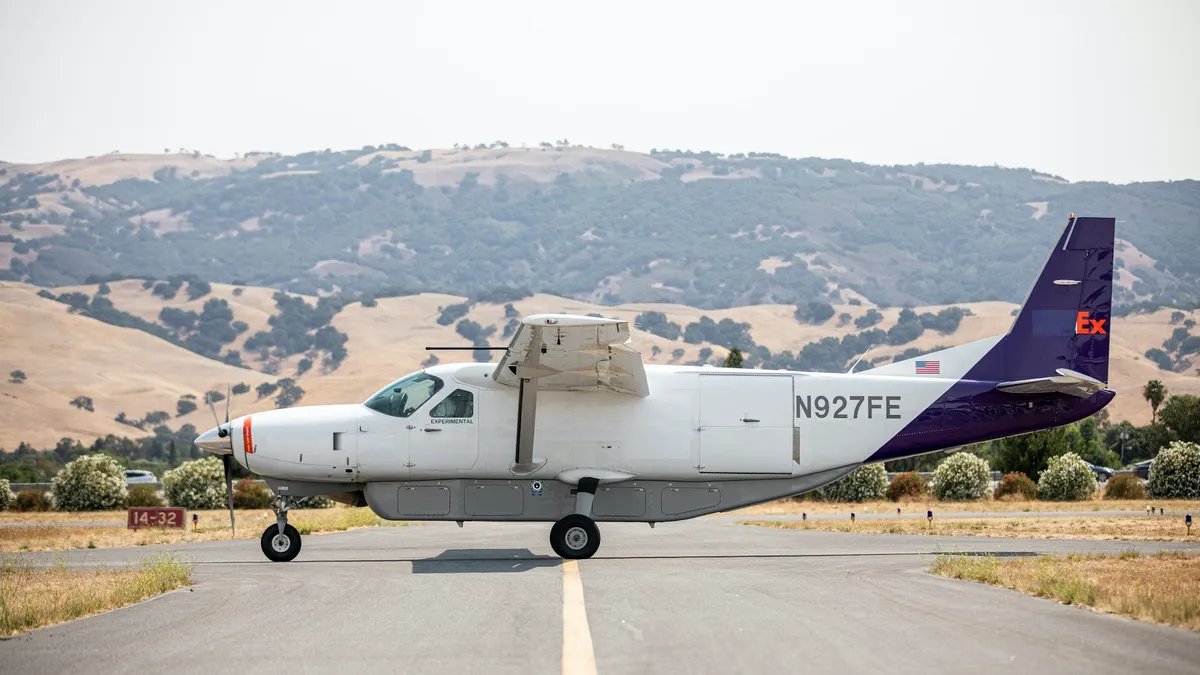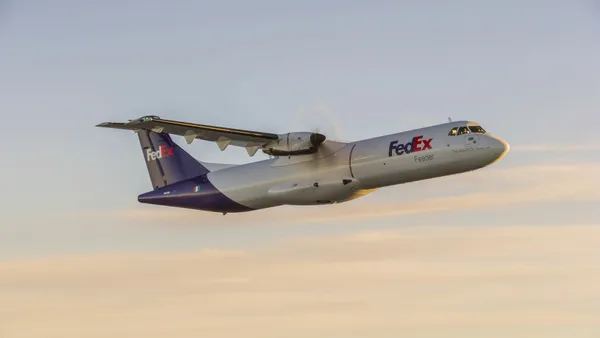Dive Brief:
- FedEx is working with Reliable Robotics to pilot the use of an unmanned single-engine aircraft for cargo delivery, CEO Fred Smith said during the annual stockholder meeting Monday.
- "This initiative deals with smaller turboprop airplanes and in this case the single-engine C208, which we are looking at putting in very remote and uninhabited areas as part of our network," Smith said.
- The company does not have plans to replace its current aircraft fleet with autonomous alternatives, he said, adding that the crews should not be worried about the technology "for the foreseeable future — decades, I would say."
Dive Insight:
Last month, Reliable Robotics completed test flights of two remote-piloted aircraft models, according to a press release from the company.
"In the first flight, the pilot pressed a button on a remote user interface and the unmanned four passenger Cessna 172 Skyhawk (C172) automatically taxied, took off, and landed," the company said in its release. "Most recently, the company demonstrated fully automated remote landing of an even larger aircraft, the Cessna 208 Caravan (C208), capable of carrying 14 passengers."
FedEx is listed as the registered owner of the Cessna 208 shown in Reliable Robotics' press release, according to Federal Aviation Administration documentation.
Reliable Robotics said it is "working with the FAA on incrementally bringing this technology to market."
It is not the only aviation company thinking about creating flying autonomous delivery options that can hold more than the drones currently making their way to market. Elroy Air hasn't made full Cessnas autonomous, but its drone can carry a payload of up to 500 pounds, according to its website.
FedEx's work with Reliable Robotics is just part of the effort to automate aspects of the supply chain. It has partnered with Wing Aviation to test drone delivery and rolled out an autonomous same-day delivery robot within the last couple of years.
Rural areas are a potential proving ground for drones. This is partially because the regulatory hurdles are easier to overcome when there is less infrastructure and fewer people around. Drones are also a way to reduce the cost of last-mile delivery to locations with less delivery density.













